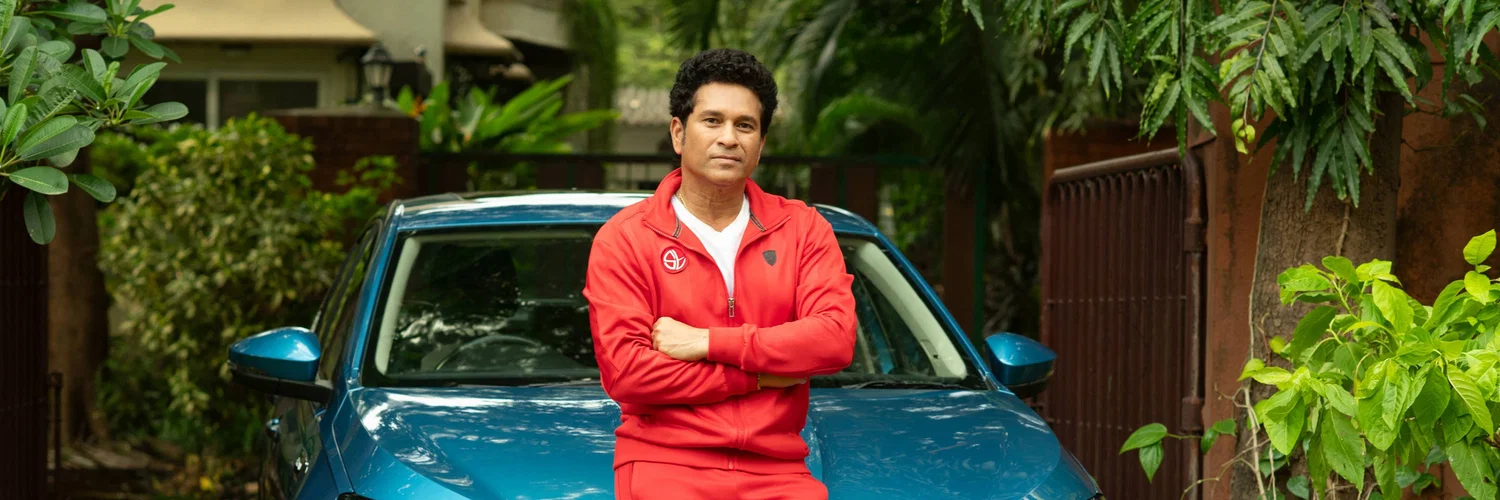Different types of car paint play an important part in honing its visual appeal and protecting the surface. Car paint is also one of the key factors that compels people to purchase it. A quality car paint gives additional shine and polish that adds production value and makes it presentable to the target customers.
Painting a car is not something that is done purely for aesthetic reasons, one should opt for repainting if the car has undergone severe scratches or collisions that have stripped the paint to expose the metal underneath. The exposed metal is prone to rust and rusted body panels diminish the car’s bodily integrity. Another reason to get your car painted is to protect the surface. Exposure to sun, rain and cold over time affects your car’s paint and if you see white blemishes on your car then these are signs that you need to get your car painted.
Other reasons include bubbling and discoloration of paint. Bubbling happens when the clear coat gets damaged and oxidation underneath the paint causes bubbles to form, which is a sign that the car needs a paint job.
Discoloration happens due to a botched clear coat job or at places where an abrasion has removed the clear coat. With the clear coat removed the color coat gets exposed to the elements and gradually begins to discolor. A paint job is required to prevent total loss of color.
Certified Used Cars on Spinny
How is car paint made?
The four parts that make a car paint are pigment, thinner, binder, and additives. These four elements are combined to deliver the perfect paint coating that fulfills the design requirements.
- Pigments help to provide colour and hide properties. There are two varieties available – prime and extender. Prime pigment imparts color and opacity while the extender pigment improves adhesion.
- Binders supply a binding effect that holds the pigment and forms a dry film. The binder promotes the performance of the car paint and adds quality – better gluing, resistance to scrub and fade, and the retention of glossy effect on the body.
- Solvents or liquids aid in mixing the paint and the binder together to give it the correct consistency.
- Additives act as a thickening element that provides density to the paint for better application. Additives help make the outpour of the paint hassle and splatter free.
What is solvent-borne paint?
A solvent-borne paint is one that has got chemical solvents in it like lacquer, urethane, or enamel. Solvent borne paints are known for their durability and ability to prevent rust. These solvents constitute a major part of the paint and release harmful organic compounds upon drying. These harmful compounds degrade the environment and are a health hazard as a result their presence from the market is gradually dwindling.
What does Waterborne paint mean?
The waterborne paints do not use any solvents and are completely harmless as the only solvent used in waterborne paint is water. Waterborne paint can be applied on different surfaces like on top of a primer coat or a plain metal, or a newly applied coating. Waterborne paints are popular as they are environmentally safe and don’t release harmful organic compounds like solvent-borne paints.
What are the stages of painting a car?
Getting paint done on a car is not as easy as using a brush on a canvas. A lot of factors are needed to facilitate the car paint. These include:
- A closed place, where there is no dust and has excessive moisture around
- Requires proper tools for sanding, painting, and shielding the unwanted areas from being painted
- Treat the rusts and wipe out the dust from the surface before applying the paints
Preparation Stage: Sandblasting

Painting a car is a skilled process under which the car frame/body undergoes a procedure to remove the impurities on the surface to get a smooth finish, this is achieved through sandblasting that strips imperfections, paint, rust, and other contaminants from the surface. This is an important step as it cleans the surface that will hold a protective coating. To protect your car’s paint you could opt for Ceramic Coating or Paint Protection Film, but it is best if these are done at the time the car is purchased.
Stage 1: Primer
Following sandblasting is primer application, a primer is a kind of a paint that consists of resin, solvents and additives that prepares the car surface for painting upon. The use of the primer is the first step in automotive painting. This initial phase of primer application is crucial and cannot be skipped at any cost, as the primer helps to level the surface of the metal car body. At this stage, to remove any defects that result from manufacturing, the primer coat is essential. The initial primer coat aids to protect the metal body of the car from rusts, high temperatures, stone splinters, and UV rays of the Sun.
Stage 2: Base Coat
The second important step is applying the base coat or color coat. In this step, the colour of the car and its visual appeal come into existence. There are four different varieties of base coat – solid, metallic, pearlescent, and matte. Each of the four varieties have distinct properties, and give a different finish.
Stage 3: Clear Coat
The last stage in automotive painting is the clear coat application. The clear coat is a transparent coat applied atop the base coat. Since it is the final step of the car paint and comes in immediate contact with the surroundings, the clear coat must be long-lasting. It should have the ability to protect the surface coat from external abrasion, and its chemical properties should create resistance from the harmful UV rays.
What are the types of Automotive Paint Finishes?
1.Metallic Paint

Metallic paint adds a metallic shine to the aluminum powder component present in every solid paint colour. The metallic auto paint can be a bit expensive as it more effectively covers up all the minute damages done to your car than any of the Solid Paints, while also lasting longer compared to solid paints. Cons of metallic paint include fewer colour options, and difficulty in finding a match with your current car colour. Covering scratches and dings of metallic paint is costly.
2. Pearlescent Paint

The Pearlescent Paints are similar to the Metallic Paint, but instead of the aluminum powder, this paint contains ceramic crystals instead. The ceramic crystals refract and reflect sunlight, and as a result, the pearlescent paint is easier to maintain. It gives a different look to your automobile compared to the other car paints. The overall look it brings is stunning and glamorous. Another advantage of pearlescent paint is that it is harder to wear out than solid paints and thus is long-lasting comparatively. But matching the colour of a pearlescent paint is difficult, which makes it harder and costlier to repair.
3. Solid Paint

Solid paints are the most widely used paint finishes on cars, mostly because they’re easy to apply and easy to match. If you somehow managed to scratch the color you could easily repaint the section by buying a matching color pen or paint. Because of their widespread use and easy availability, painting your car in solid paint is cost-friendly.
4. Matte Paint

A matte paint absorbs most of the light thrown at it and gives a dull sheen to the car’s surface. Matte finishes are very rarely seen on cars due to the fact that they are very difficult to pull off, require very serious maintenance and are super expensive. Matte finishes aren’t very popular as they are available only in colors like black, silver or grey.
FAQs
What are the different types of car paint?
There are four types of car paint-
- Urethane –
- Highly resistant paint
- Easy to use
- Dries out faster
- Costlier.
2. Acrylic Enamel paint –
- Long-lasting paint.
- Two varieties are available – Single-stage (a mixture of a base and clear coat) and Two-stage (a basecoat and a clear coat applied separately).
3. Acrylic Lacquer –
- Gives a glossy effect
- Easy to apply
- Fades fast when exposed to UV rays.
4. Acrylic Urethane
- Gives a long-lasting effect
- Easy to apply.
- Paint dries if not applied fast
Which type of paint is best for a car?
Urethane paint is the most enduring car paint that does not fade away quickly. It can survive most acrylic paints that are usually water-based. Urethane paints are inexpensive and dry out quickly when applied. The finishing is stronger and better than acrylic enamel paints as it can last up to 10 years more than acrylic enamel finishing under similar circumstances.
What are the types of automotive paint finishes?
- Metallic Paint has an added layer of clear coat – it mixes a small amount of powdered metal into the paint coating, giving it a shiny surface.
- Pearlescent Paint has metallic powder consisting of ceramic crystals. These crystals help to reflect and refract light making the surface more shiny and appealing.
- Solid Paint is a cheaper and most used paint finish as colour matching is easy, and any minor scratch is covered-up with a touch-up pen.
- Matte Paint is difficult to maintain and requires particular products for upkeep.
What should be kept in mind while getting a new car paint?
Keep these points in mind while opting for a new car paint:
- Match the colour of your car before touching it up.
- Buy and apply environmentally safe paints
- Clean your car before applying any paint.
How to buy car paint?
Here are a few tips for buying car paint:
- If you choose the red colour for your car, remember it fades faster than the other colours.
- Polish your car to avoid fading, but never use wax matte on it.
- The brightest and safest colour in the palette is yellow.
- If you don’t clean your car regularly, get a grey or silver paint done, that will help you to hide dirt.



 ne big family!
ne big family!